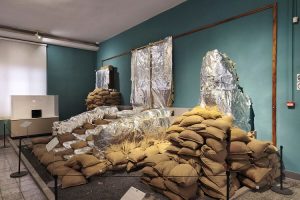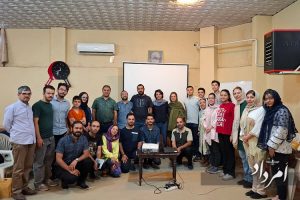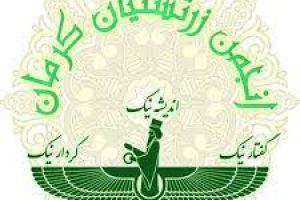In Nowrooz 1402 (2023), after a long time, I had an opportunity to visit my homeland. I had a chance to see the villages of our Dashtestan plains, especially my homeland plains, and a number of Saad Abad villages. Seeing new names of some places (proper names of places/villages), which probably speak of the current state of the other shores of the country, made me write this. Pressure of miscellaneous work delayed finalization of this article until today, on the eve of Nowrooz 1403.
When I was young, I knew very well the beautiful villages called “Dasht Gur”, “Abadi Kol (Karbalai) Ali”, “Bi Be Rah” (Berah), “Mazareyi”,… The “new signs” at the entrance of these villages surprised me: Dasht Gour changed to Goldasht, Abadi Kol Ali to Mushfeq Abad, Bi Berah – Farms to Vahdtiyeh, Tal Shofa to Tal Sarkouh. These few new names are the subject of this note.
Many ethnic groups lived in this land before Aryans entered the plateau of Iran. However, the “linguistic heritage” (such as inscriptions) of these ethnic groups has not reached us (it is assumed that they did not have script in those ancient times) but their legacies have reached us.
- Although linquistic works of these people (like script) have not reached us, the discovery of thousands of pottery, jars, bowls, cups, bronze works and many thousands of millennia, such as the first millennium, the second millennium (prehistoric era), etc., is evidence of the material heritage of these ethnic groups that have lived in this sacred land; do we know the names and languages of the civilized people who left behind the precious relics of Jiroft in Kerman? Do we know the builders and residents of Shahr Sokhte (Sistan)? Do we know precisely the people who lived in “Shaghab” (Bushehr)? We don’t even know the names of many of these tribes. Moreover, these ethnic groups had a language. They used common names in their language to name mountains, rivers, cities, villages, etc. The most import part of the legacy is that the sacred soil of Iran has preserved the heritage of these people for thousands of years.
- The intangible language heritage of these people is the most valuable. The linguistic heritage of these ancient unknown and towering ethnic groups in the soil of Iran has reached us through the notable names of “rivers, mountains, valleys, villages and cities”. Who can say what the meaning of city names: Tehran, Rasht, Zahedan, Sari, Bushehr, Kangan, Borazjan… or mountains like Zagros, Orin, Bankol, Birak… or rivers like Talar, Aras, Dalki, Karun…? Who can say that such and such a name above belongs to such and such people from such and such historical period? But these names are familiar and valid in Iran now.
Our “Iranian ancestors” also respected this proud heritage (names) of the past and guarded them for thousands of years. Our richly cultured ancestors never took any action nor insisted on changing native names in this land. Therefore, in the pure soil of Iran, we are faced with three specific categories of geographical names:
- Ancient (non-Iranian) geographical names left over from unknown ancient ethnic groups such as the above names.
- Known non-Iranian names of well-known ethnic groups such as Chaghazanbil, Ahvaz, Shaghab (Elamite) or the Akkadian word “Bashush” (duck), which came to us through the Dashtistan dialect (as well as Dezful), in an amazing way for thousands of years.
- Fully Iranian geographical names such as Azarbaijan, Arvand (river), Bishapur,Behshahr
This treasure of names, which is proof of our great civilization in this world, has made Iran an unrivalled country through the lens of respect for cultures and the history of democracy, which is envied by many in the world. Therefore, any uprooting, change, or displacement of these names only means shortening and destroying a part of the historical identity, which can also become a national threat. Iran’s competitors and ill-wishers are always looking for such excuses.
Today, in Iran, whether it is a village with a fully Iranian name, or a town with an unknown or even non-Iranian name, is part of the national borders, territorial identity, our history, the connection point from the past to the present and the future. Our proud ancestors had such a legacy for millennia until it reached us. Everything that has reached us from this soil is “the heritage of the Iranian people in the geography of Iran” and is also known as “Iranian heritage” in the world of science. We, the current generation, are also committed to preserving it and passing it on to the next generations.
Conclusion
We are proud to be living in a country where the history of life, i.e., the history of “human figures” in the Kashaf River of fertile Khorasan or the slopes of the even more fertile Zagros range, goes back to more than 250 to 300 thousand years! Have you heard of such a fantastic world history? Have you heard that people of different cultures and thousands of years have such a colourful heritage with all respect? Isn’t it important that we also guard all that we have inherited as intangible heritage (place names: names of villages, rivers, cities)?
Undoubtedly, we should remember that geographical names:
- Reflect geographical history and its natural location; the village of “Dasht Gour” reflects a plain where once there were lots of zebras (unfortunately we have fully destroyed the animal species), or a village next to it by the name of Palangi (where there were leopards and everyone living there knows it).
- Reflector is a religious concept and belief. Suppose the village of “Bi Berah” is a Persian word. In that case, it means Imamzadeh on the way; in its obvious sense. If this name is very ancient and from a non-Iranian ethnic group and has left us, it does not need any explanation.
- Reflects events (historic or political or war) or a meaningful name: “Tal Sofa,” “Barmak,” and “Abadi Kol Ali” (that is, the village built by/of Karbalai Ali).
- Reflects natural history of a tribe; for instance, the village by the name of Mazraie means where people would do farming.
- Reflects an old industry or technology, such as the “Kaman Kashi” village meaning where archery was popular.
Is it right to change and remove this intangible ethnic heritage of several thousand years? Is it right to cut off the link between thousands of years of ethnic and native culture and the future generations? Won’t this distortion become an excuse in the hands of the enemies of the country to create discord in the future? Is it the right thing to destroy the path of Iranology research? Can’t each of these ancient names be the subject of study? Many of these names appear in historical texts. How will this issue be resolved with this disconnect? To tell the history, until a certain point, this name was familiar; it existed in official and unofficial reports, but now it has been deleted! Is it scientific? Which scientific committee and for what historical-linguistic reasons deleted it from the national map?
Are we supposed to be ashamed of the name of a particular village (for example, Tel Tashafa)? Are we supposed to go back to that time and that event that happened in the past? It is good that we (as the people of the world) have the opportunity to learn from the past, as our ancestors kept with the most minor and most insignificant means. Wasn’t the change of the great name “Kermanshah” to “Bakhtran” advisable and sufficient? Has the selection of the word “Wahdtiyah”, an Arabic name, not led to the removal of two well-known regional names? Is “Tel Sar Kouh” located on top of the mountain or on the side of the hill? Is it necessary to solve some ethnic and tribal problems through cultural work or to combine them under one name? Do you know that in Azerbaijan (Baku), Uzbekistan, Turkmenistan, and even Afghanistan, official orders have been given to remove Iranian names on villages, cities, and rivers… and add fake names instead? Won’t this action (name change) face a severe problem in the way of registering some ancient works in these villages in the world list in the future?
Should the word “Akkadian Oil” in the name of “Shahr Oil, Oil Industry Team, Ministry of Oil” be discarded? This non-Iranian word has been associated with Iranian culture and languages for thousands of years. Names and places are the heritage of our ancestors, and we respect and honor them.










